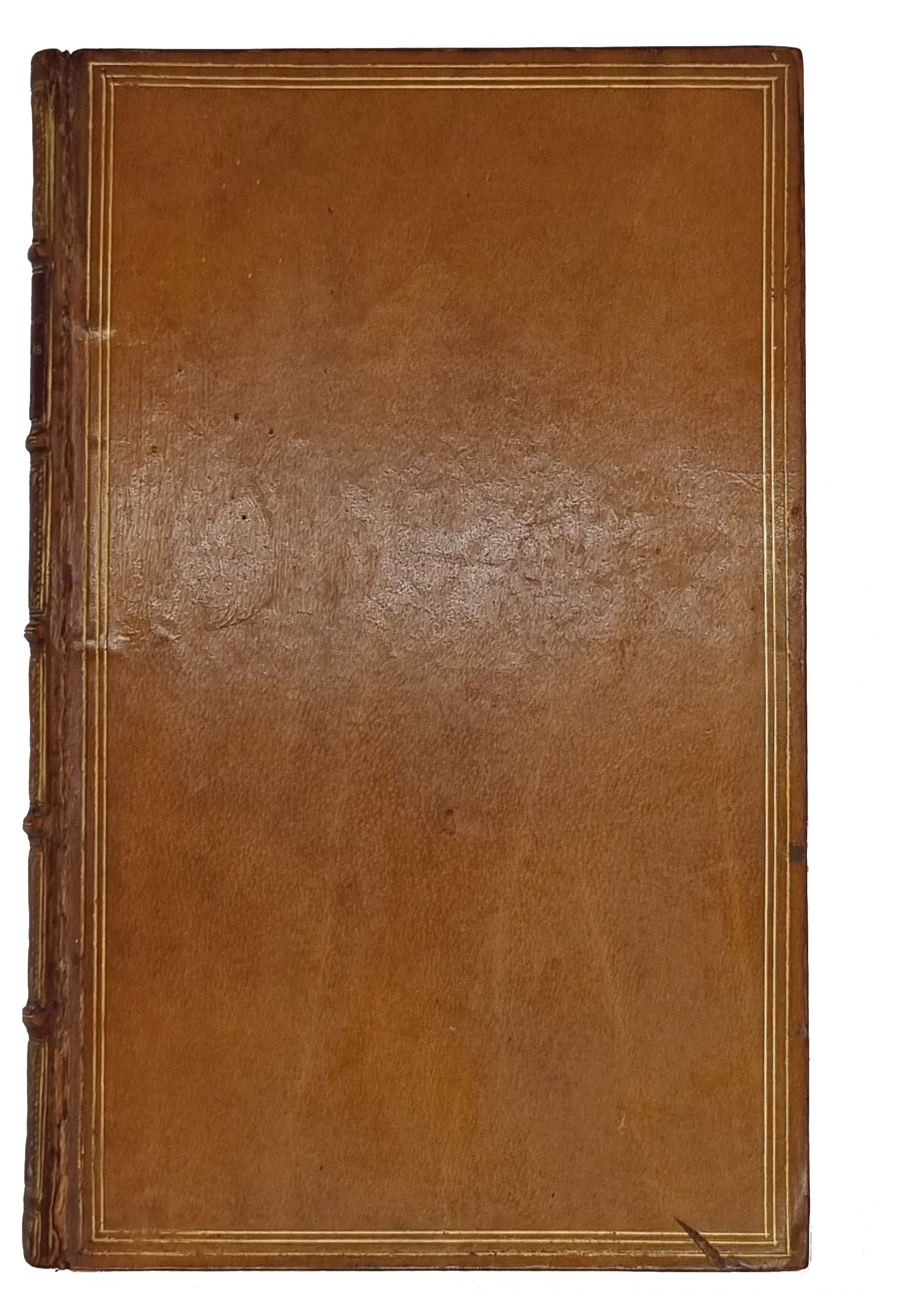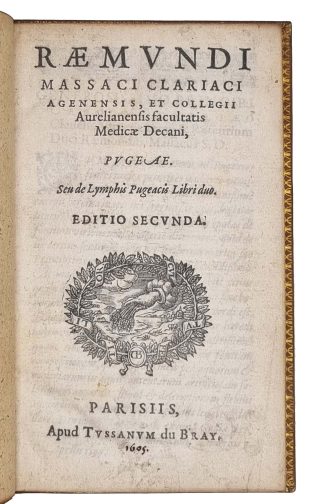MASSAC, Raymond and Charles de. (and) OVID, Naso, Publius. [MASSAC, Raymond. trans.]
Pugeae, seu de Lymphis pugeacis libri duo. (with) Les fontenes de Pougues, mises en vers françois (and)
Paris, Du Bray, 1605.£2,250.00
8vo. 3 vols in one, separate t-p to each. 1) pp. 48; A-C8. 2) pp. [xvi] 44 [iv]; π8, A-C8, without first and last blank, one leaf in preface bound out of order. 3) pp. 58 [ii]; ã8,é8,í8,ó6.. Roman letter, some Italic and Greek. Woodcut printer’s devices on each title, woodcut initials and grotesque headpieces, typographical ornaments. Light age yellowing, first title washed. Very good copies, crisp and clean in handsome C19th polished calf by the ‘Petit succ. de Simier’, covers bordered with a double gilt rule, spine with raised bands richly gilt in compartments, edges double gilt ruled, inner dentelles richly gilt, combed marbled end papers, a.e.g.
Three extremely rare editions of the principal works of the doctor Raymond de Massac and his son Charles, a poet, who helped versify his work. Massac was a member of the Academy of Arts and Sciences at Toulouse and was also a member of the Faculty of medicine at Orléans. The first work is Massac’s detailed description of the properties of the waters of the fountains of Pougues in Latin, and the second the same, translated into alexandrine verse by his son Charles. Jean Pidoux, doctor to Louis de Gonzague, Duke of Nevers, was the first to write about the curative virtues of the waters of Pougues, 1584. Having become physician to the King, Pidoux advised Henri III, who suffered from renal colic to come and take the “waters” of Pougues. Henri III felt so well after his “cure” that he returned, accompanied by his mother, Catherine de Médicis, who also suffered from kidney pain. Massac’s work is also dedicated to the wife of the Duke of Nevers. It discusses the relative properties of two fountains close to each other, one called Saint Léger, the other Saint Marcel in great depth. Henri IV had just also visited the fountains in 1603, to deal with his kidney problems, and a year later his gout, and Massac deals the properties of the water in helping both conditions.
Charles and Raymond de Massac published the first part of their translation of the Metamorphoses in alexandrines in 1603, only completed in 1617 and would not be further printed. The third book here is the continuation, the translation of the 13th book. Their translation conforms to the protocol followed by the previous translators into French, Habert and Clement Marot in the use of verse, the absence of illustrations and allegorical comments; parsimonious use of subtitles and glosses in the margins. This choice could have been determined by the wish of the Massac’s to register their translation, dedicated to Henri IV (in the first edition), in the continuity of those proposed in the past to the kings of France: (Marot (François Ier) and Habert (Henri II). However their timing was unfortunate in that Renouard published a prose translation at the same period, (1606) much altering the text, which was profusely illustrated with lots of commentary that proved hugely popular, and consigned the Massacs’ translation to oblivion.
From the extensive library of rare medical works of Dr. Maurice-Villaret.
USTC 6017223. USTC 6017141. USTC 6018350. (i) Wisconsin copy of second part only in US (ii) Harvard and possibly Yale in US (date not specified)In stock





